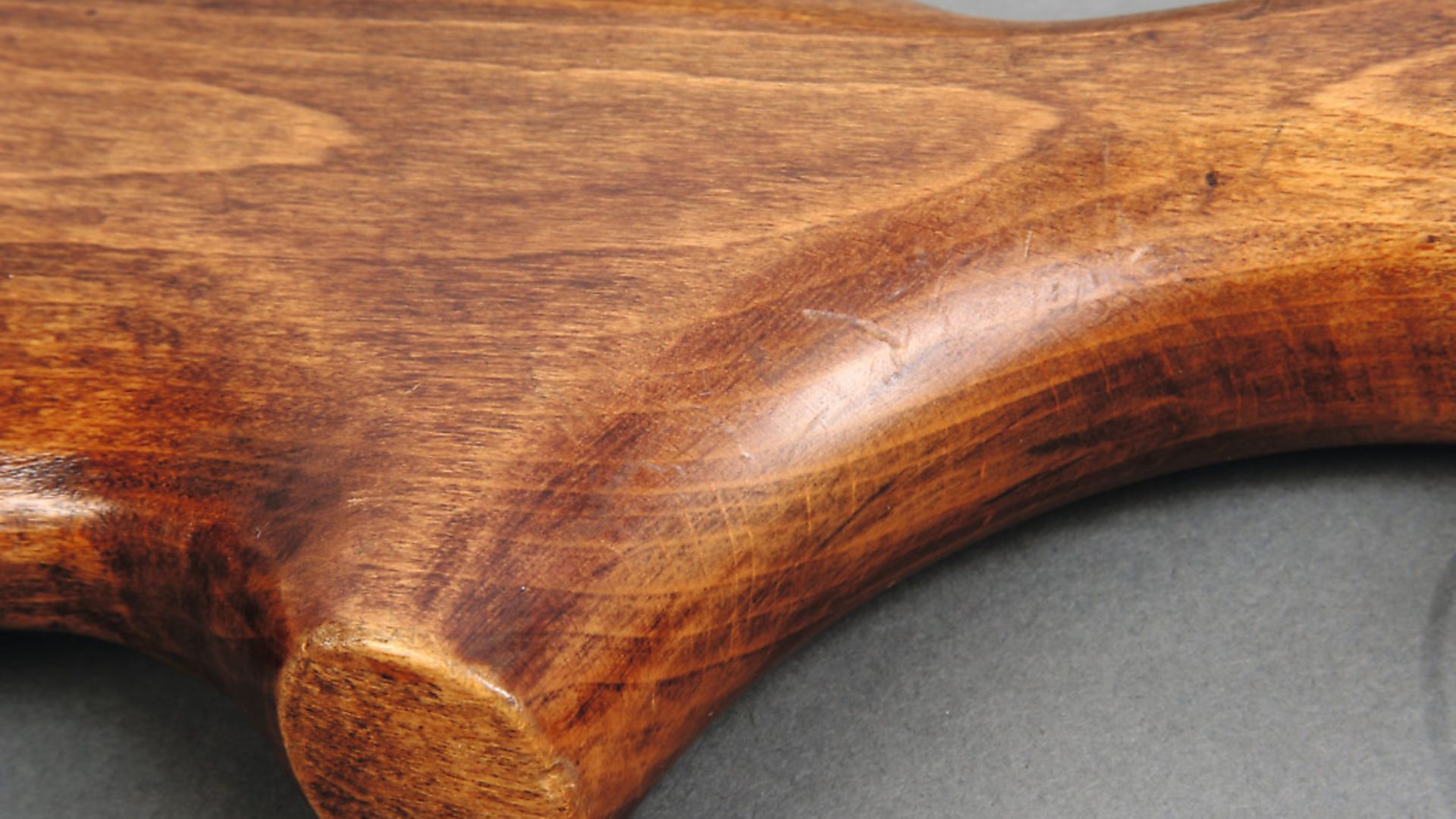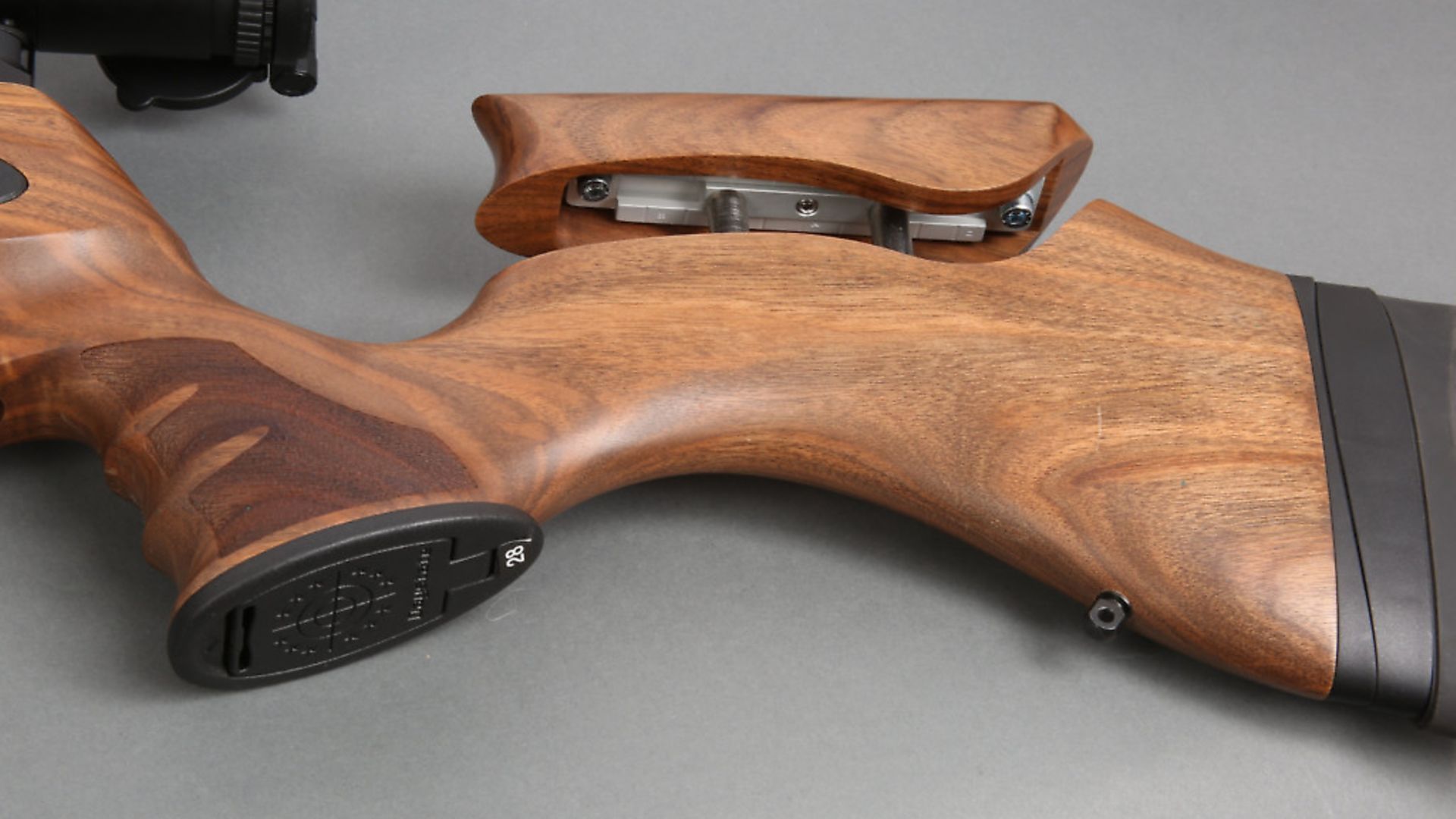The editor reflects on Daystate’s four decades of airgun development
 credit: Archant
credit: Archant
I was just getting into ‘serious’ airgunning at club level when Daystate became part of my world. I’d heard of their strange airguns, which ran on compressed air from a diver’s bottle, rather than a mainspring like ‘proper’ guns, and even when I saw my first Daystate in a gun shop, I dismissed it as ‘too complicated, when a springer does everything I need’. That shows what a rubbish visionary I was, but I was lucky enough to have a genuine airgun guru as a good friend, and he had more than enough vision for both of us.
Barry McCraw was the genius-in-residence at Markyate Airgun Club when I arrived as a field target novice in the mid-1980s, and his heavily customised Daystate was the only pre-charged pneumatic there. Barry was forever working on that rifle, making tiny changes to bits of it that were a total mystery to me, but whatever he did to it, it took him right to the top of the FT world in those days. Even then, I still thought that Daystate was too complicated, and I carried on regardless with my beloved Airmasters HW77.
 credit: Archant
credit: Archant
Testing...testing
Then, in 1987, or very near offer, I did my first rifle test for Airgun World. It was the brand-new Daystate FTR – Field Target Rifle – and I knew I was shooting the future. Before I knew it, my clubmates had caught the PCP bug and I was one of the very last conversions, although by then Air Arms and Sportsmatch had joined the pre-charged pneumatic arms race, and airgun technology has never looked back.
The modern PCP ‘revolution’ began with Daystate, though, and it’s pleasing to see the company still pushing the technical envelope with its range of pre-charged rifles today. Thus the theme for this test is set, as I compare and contrast a Daystate Huntsman of yesteryear, with the company’s very latest offering, the all-electronic Red Wolf.
 credit: Archant
credit: Archant
The Huntsman HH
This was the very model I encountered in that gun shop all those years ago, although that version of me saw it through completely different eyes. What seemed then almost impossibly complicated, is now steeped in a degree of simplicity that makes me smile fondly to myself. It has no multi-shot magazine, no sweeping curves and cutaways on the stock, and absolutely no adjustability of any kind. The term ‘ergonomics’ hadn’t been defined back then, and that early Huntsman was ripe for a few ‘user interface enhancements’ to say the least.
 credit: Archant
credit: Archant
Nice and simple
I find it interesting, possibly because I’m a bit of a saddo, that the pull-length of the HH was a mere 13 inches. The grip is fairly skinny, too, with no accommodating palm swells to assist hand contact at the grip or fore end. The balance of the rifle is hugely biased toward the front end, caused by the sheer weight of the Huntsman’s stainless steel reservoir and its ¼-inch thick walls. That rifle produced 40, full-power shots, though, and high-power examples were also available, and these produced energies no springer, then or now, could reliably match.
Yet, despite the early Huntsman’s simplicity, it has an understated elegance about it, which is pleasing to the eye, especially for the traditionalists among us. This lack of complication has been passed to the latest Daystate Huntsman models, and those rifles are all the better for it. My colleague, Phill Price, uses his Huntsman as his go-to sporting rifle, and the HH heritage is still visible.
 credit: Archant
credit: Archant
Function over form
Even without the ergonomic advantages of its modern counterparts, the ‘vintage’ Huntsman still puts in a credible performance, with sub-inch groups out to 35 yards, courtesy of its 5.6mm bore. The model Daystate sent us has a straight-bladed trigger, which was standard on the FTR, but not on the sporters, as I recall. More importantly, that trigger still works fairly well, albeit not blessed by the slick precision of the Red Wolf standing smartly to attention in the gun rack beside me. Let’s be frank, here; the PCP triggers we pretty much take for granted these days are worlds apart from what many of us grew up with, and having tested these Daystates side by side, I can report that this advancement applies to virtually every feature and every facet of the latest rifles … as indeed it should after so many years of development.
The Red Wolf
Swapping the Huntsman HH for the Red Wolf was like climbing out of a 1960s sports car (and yes I’ve done that), straight into a modern, luxury saloon. I wish I could tell you that shooting the older rifle was more rewarding on all sorts of levels, but that would be a dirty great fib. It seems the years have inflicted an efficiency addiction on me and I’m irretrievably lost to it.
The Red Wolf produced single-hole groups at 35 yards, with little conscious effort from me, whereas I was actually required to try with the old Huntsman. The Wolf’s sidelever was all but effortless to cycle, and its trigger let me ‘think off’ each shot, just as Barry McCraw taught me over 30 years ago. I truly didn’t understand Barry’s instruction then, but the Red Wolf’s electronic, omni-adjustable trigger is the perfect medium through which to express that technique. No deliberate action to launch the shot, just the positive thought of doing so, and away it goes, perfectly timed and flawlessly delivered.
Pure performance
I’ve tested the Red Wolf several times, now, and I know exactly what it can do at every credible range, and possibly beyond. This rifle will group pellets well inside an inch at 50 yards, and I’ve shot plenty of groups around half that size. This rifle’s shot count is numbered in the hundreds at the legal limit, and its electronically-regulated output ensures a degree of shot-to-shot consistency that the ancient Huntsman could match for about 15 shots of its 40-shot capacity. The fact is, the more I compare these rifles, the more obvious it becomes that there really is no comparison between them, and again, that’s exactly how it should be.
Lessons from history
Now, via Daystate’s 40-year progression, I’ve been able to assess my own shooting heritage, and the simple lesson is made stark by such a direct comparison of then and now. The progression of our hardware is simply incredible. Every feature and the way it performs for us and with us, has pushed our overall efficiency to truly incredible levels, most of which we take for granted. We tend to compare the latest models with their previous incarnations and this gives the impression of tiny, often imperceptible, changes which aren’t fully appreciated. Only by directly comparing where we started to where we are now can we truly realise how far we’ve come.
Congratulations on your 40th birthday, Daystate, and who knows what incredible developments await the pioneers from Staffordshire, in the decades to come.
Visit the Daystate website here.